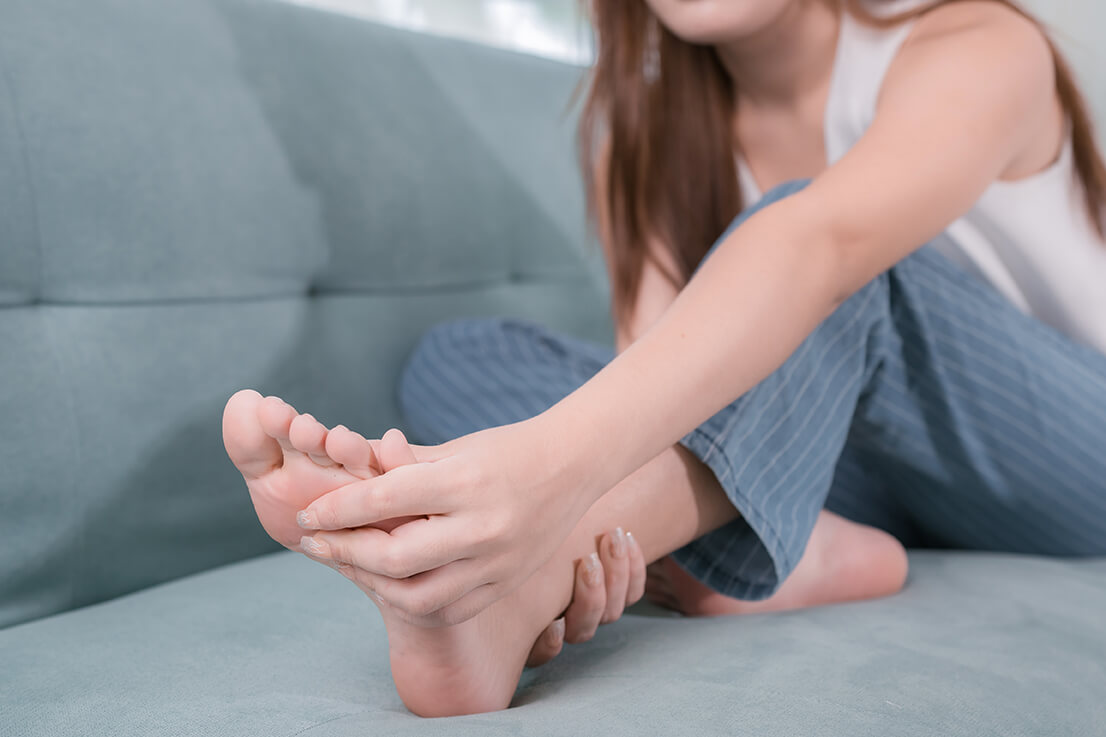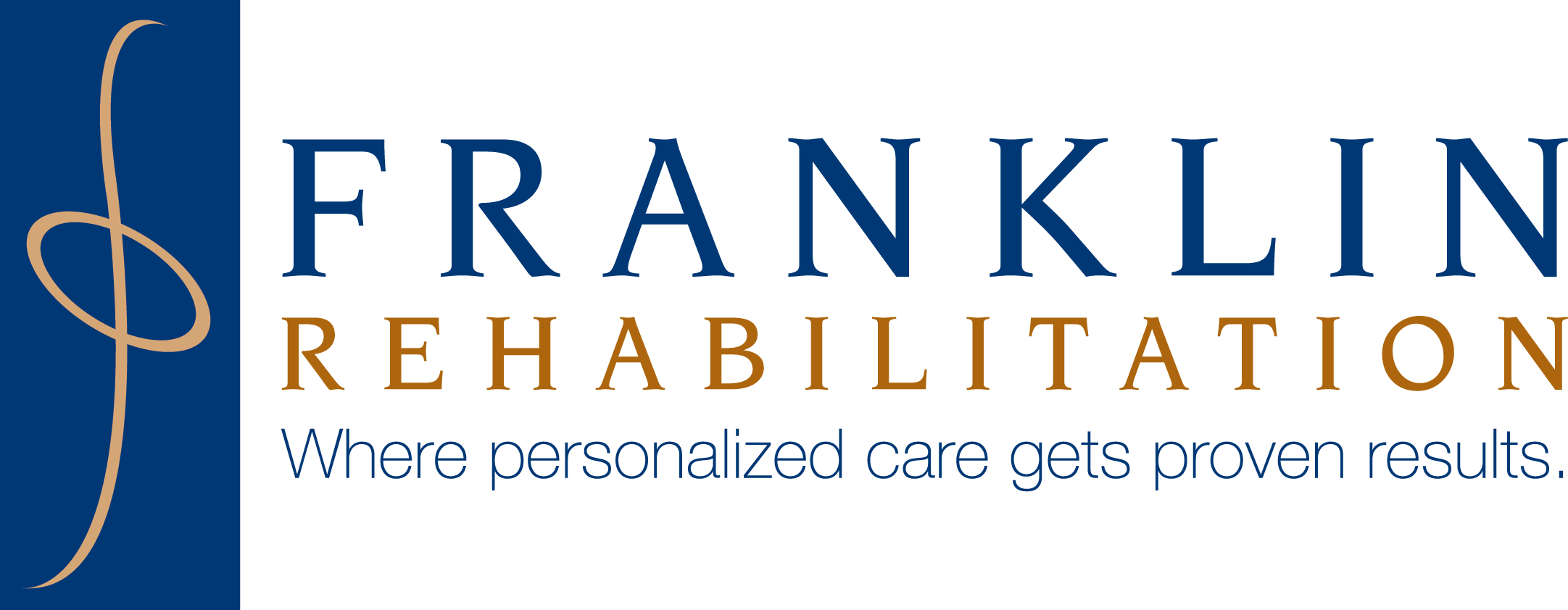Sharp pain in the arch of your foot? 7 likely causes and how PT can ease your pain

Experiencing a sharp pain in the arch of your foot can be distressing while also impacting your mobility and well-being. A variety of factors can contribute to this type of foot pain. They can range from structural issues to overuse injuries. Thankfully, physical therapy can provide you with a comprehensive approach to identify the root cause of your foot pain and help alleviate the pain you’re experiencing.
Likely causes of sharp pain in the arch of the foot
The foot arch is a complex structure of bones, muscles, ligaments and tendons. They work together to help provide support, absorb shock and facilitate movement. Due to the complex nature of the foot structure, it can be susceptible to many issues that can result in a sharp pain in the arch of your foot. Common causes of your pain can include:
- Plantar fasciitis — Inflammation of the plantar fascia causes plantar fasciitis. The plantar fascia is a thick tissue band connecting your heel bone to your toes. This common condition can be caused by overuse, wearing improper footwear or participating in high-impact activities. Plantar fasciitis can cause a sharp pain in the arch, especially during your first steps in the morning.
- Flat feet — Flat feet are a condition that leads to a reduced or absent arch in the foot. It can cause additional stress on your foot’s soft tissue. Genetics, age-related changes or injuries can cause it. Flat feet can cause arch pain, general foot fatigue or difficulty with prolonged standing.
- Tendinitis — Tendinitis is caused by inflammation of the tendons, including the tendons that support the arch of your foot, and can be due to overuse, repetitive stress or injury. It can cause a sharp or throbbing pain, swelling, and tenderness in the affected foot.
- Tarsal tunnel syndrome — Tarsal tunnel syndrome is caused by the compression of the tibial nerve in the tarsal tunnel. This compression can cause pain and discomfort in the form of sharp pain, tingling or a burning sensation. It can be caused by flat feet, injury or systemic conditions.
- Metatarsalgia — Metatarsalgia is caused by inflammation and pain in the ball of the foot, affecting the area near your arch. High-impact activities, ill-fitting footwear or an excessive amount of pressure on the forefoot can cause it. It can cause you to experience sharp or shooting pain in the arch and ball of your foot.
- Arthritis — Arthritis is a condition that causes inflammation of the joints, including those in the midfoot. Arthritis can be caused by aging, genetics or injury. It can cause you to experience a sharp pain, stiffness and a reduced range of motion in the foot.
- Stress fractures — Stress fractures are tiny cracks in the bone that can be caused by repetitive stress. This stress can be due to overtraining, a sudden increase in activity or having weakened bones. Stress fractures can cause you to experience sharp pain during weight-bearing activities.
How can physical therapy help alleviate the sharp pain in the arch of your foot?
Physical therapy is a valuable and noninvasive approach to help address the underlying issue causing the sharp pain in the arch of the foot and help promote optimal foot health. A skilled physical therapist will conduct a thorough evaluation and consider your medical history, lifestyle and specific symptoms you are experiencing. Your physical therapist will then design a treatment plan that is tailored to your individual needs, incorporating a variety of interventions to help target the identified issue. Your treatment plan may include:
- Soft tissue mobilization — Soft tissue mobilization is a manual therapy technique used by physical therapists to manipulate and massage the soft tissue. Soft tissue mobilization can help reduce muscle tension, improve flexibility and improve blood circulation, which can help alleviate the sharp pain in the arch of your foot.
- Joint mobilization — Joint mobilization is another manual therapy technique used by physical therapists to help restore normal joint movement by gently applying controlled force to the specific joint surfaces. It can be used to help address restrictions in your foot joints, which can improve your range of motion and alleviate sharp pain in the arch of your foot. It can be tailored to your individual needs concerning the affected joints.
- Electrical stimulation — Electrical stimulation is a modality that uses strategically placed electrodes to send electrical currents to help stimulate nerves and muscles of the affected area. It can help manage pain, reduce muscle spasms and improve your circulation.
- Graston Technique® — The Graston Technique uses specialized stainless steel instruments to mobilize soft tissue. Specially trained physical therapists use these tools to detect and treat scar tissue and fascial restrictions. It can help break down scar tissue, improve mobility, and promote overall healing.
- Trigger point release — Trigger point release can target specific points of muscle tension to help alleviate sharp pain and promote muscle relaxation by releasing knots or tight bands in the muscle of the foot.
Sharp pain in the arch of your foot requires a tailored approach to provide you with effective relief. Physical therapy can address the root cause of your foot pain and work toward restoring your optimal foot function. Embarking on this journey can help alleviate your sharp foot pain, improve mobility and help you regain the freedom to move comfortably in your daily life.
Trust Franklin Rehabilitation to be your partner in relieving your arch pain
At Franklin Rehabilitation, we understand the impact a sharp pain in the arch of your foot can have on your daily life. Our team of expert physical therapists is dedicated to providing you with compassionate and personalized care to address the root causes of your discomfort. We strive to help alleviate your immediate pain and improve the overall function of your foot.
Call us or request an appointment today to help relieve the sharp pain in the arch of your foot.
